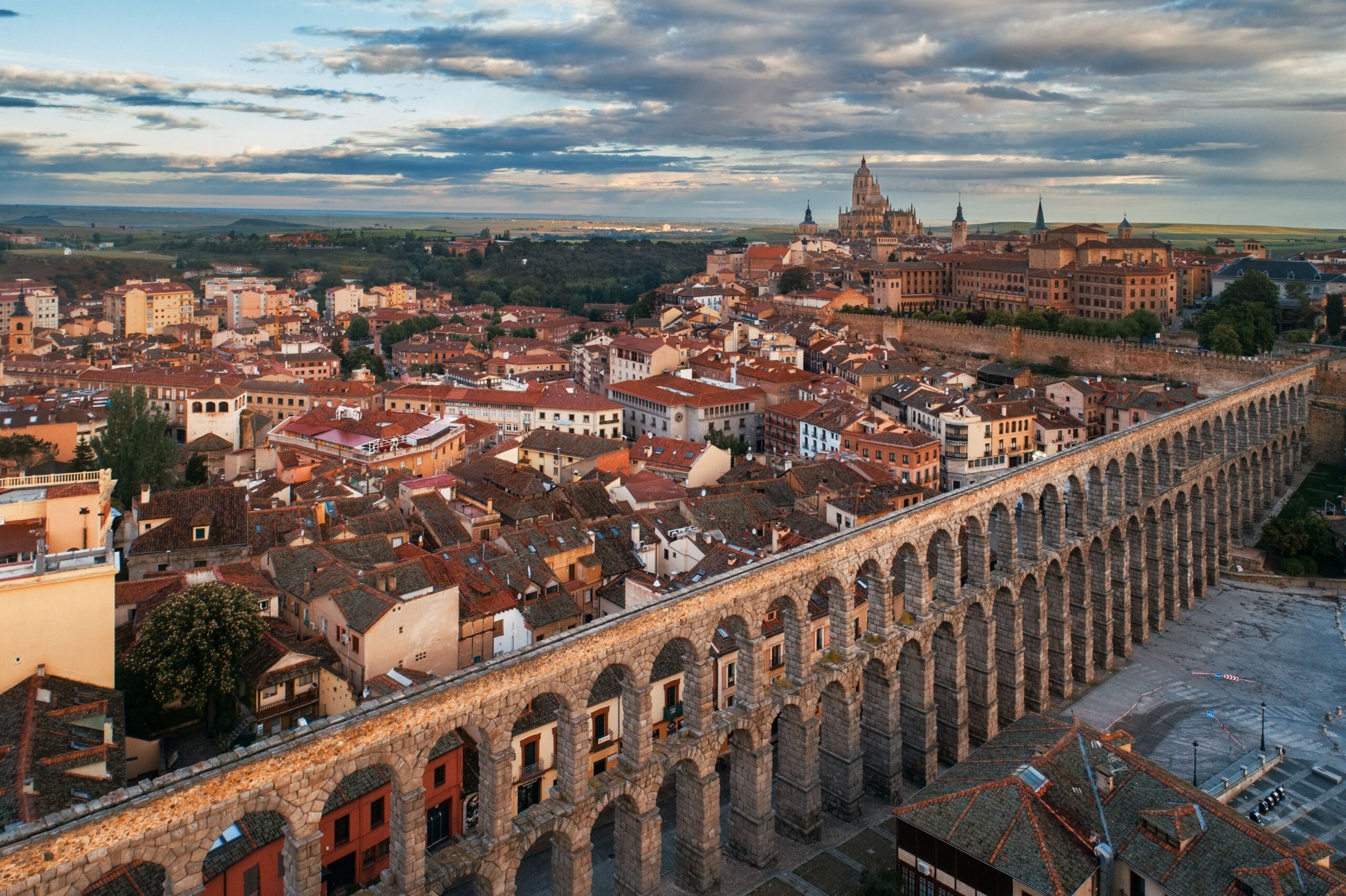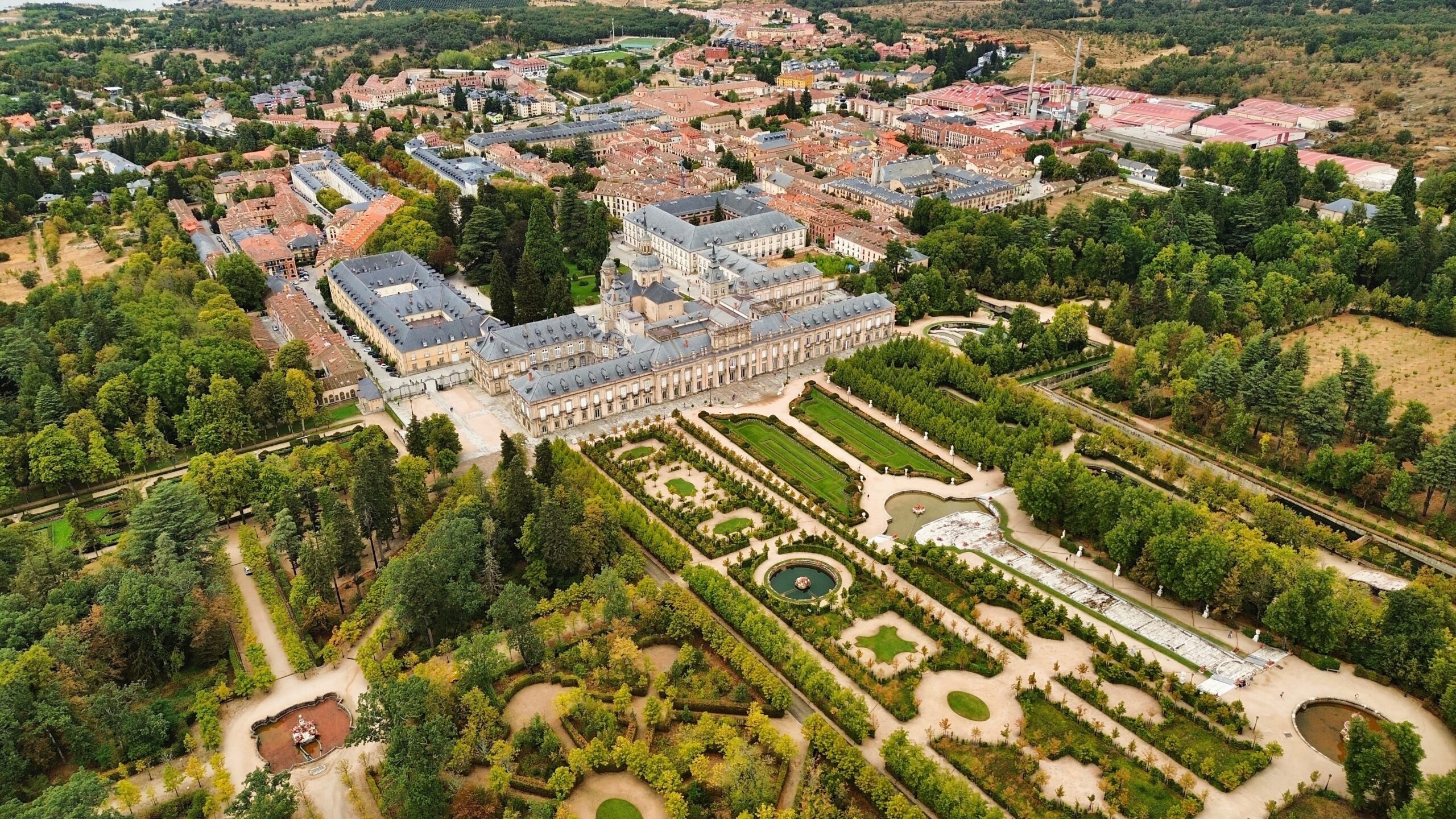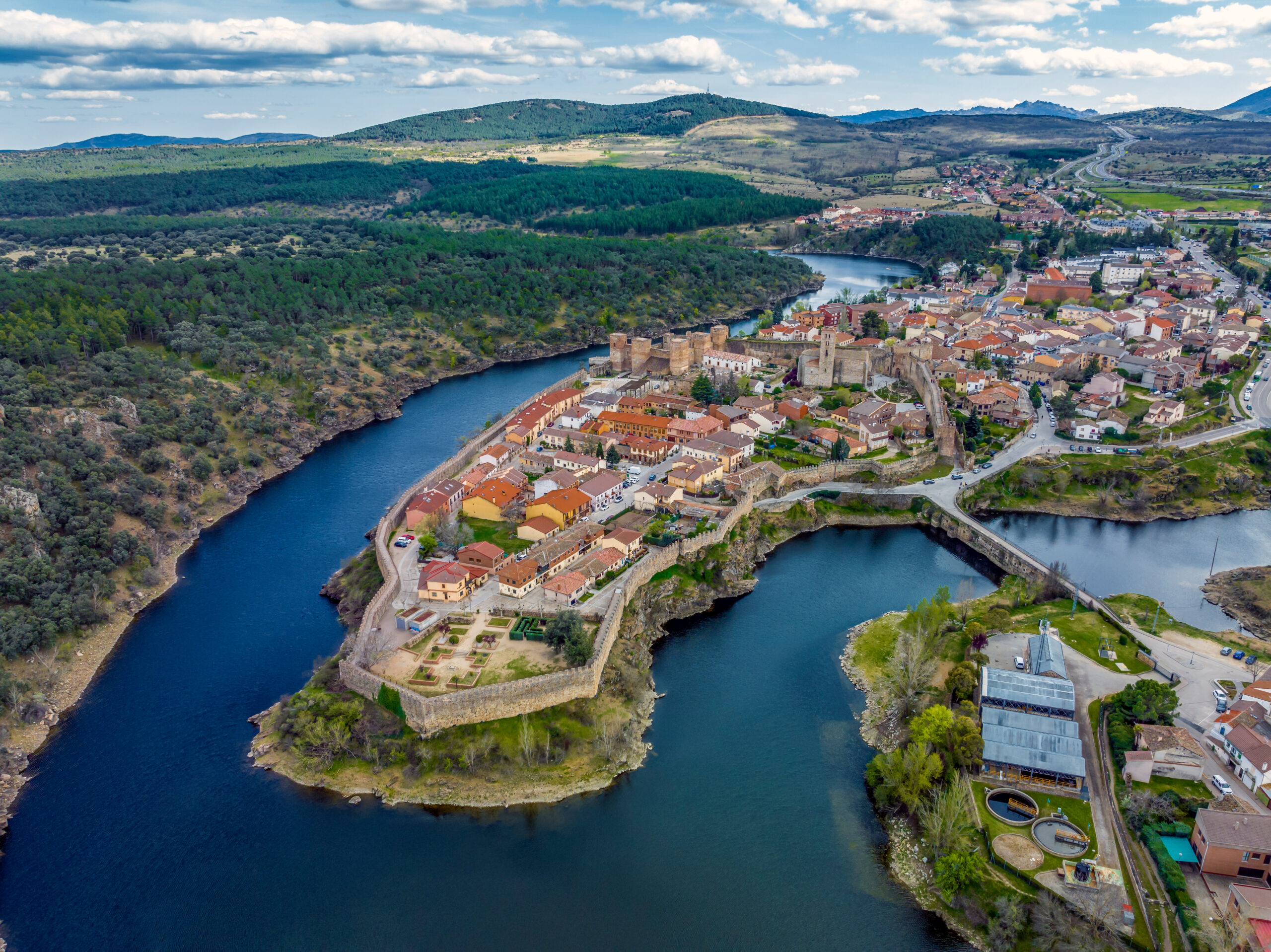October brings ideal conditions for family travel around Madrid—comfortable temperatures, stunning autumn colors, and the kind of crisp, clear weather that makes outdoor exploration genuinely enjoyable rather than endurance-testing. The intense summer heat that can make sightseeing with children challenging has passed, while winter cold hasn’t yet arrived. This narrow window of perfect travel weather creates opportunities for memorable family adventures that blend education, exploration, and genuine fun.
Professional nannies working with Madrid families understand that successful day trips require more than simply choosing interesting destinations. The logistics of traveling with children, maintaining routines while exploring new environments, and managing energy levels throughout extended outings demand expertise and careful planning. The three destinations detailed below represent our nannies’ most recommended autumn excursions—places that consistently deliver excellent family experiences when approached with appropriate preparation and realistic expectations.
Understanding Successful Family Day Trips
Before exploring specific destinations, it’s valuable to understand what distinguishes genuinely successful family day trips from those that leave everyone exhausted and frustrated. Professional caregivers recognize several key factors that determine whether excursions create positive memories or become ordeals everyone wants to forget.
Appropriate distance matters enormously with children. Destinations requiring more than 90 minutes of travel often test children’s patience beyond comfortable limits, particularly for younger ages. The excitement of arrival must justify the travel investment, and children need sufficient time at destinations to make journeys worthwhile without becoming overtired.
Activity variety within destinations also proves crucial. Children need opportunities for both structured sightseeing and unstructured exploration. Locations offering natural movement opportunities—running, climbing appropriate structures, or simply walking interesting paths—help children manage the physical energy that builds during car journeys.
Our nannies also emphasize the importance of destinations that engage multiple age ranges simultaneously when families include children at different developmental stages. Places offering layered interest—visual beauty for younger children alongside historical significance for older ones—prevent the common dynamic where some family members enjoy experiences while others feel bored or overwhelmed.

Segovia: A Living Fairytale
Located approximately 90 minutes northwest of Madrid, Segovia represents one of Spain’s most visually stunning small cities and offers the kind of architectural drama that captures children’s imaginations immediately. The city’s compact historic center, dramatic monuments, and family-friendly infrastructure make it our nannies’ top recommendation for families seeking cultural richness alongside child-appropriate adventure.
The Alcázar: Disney Made Real
Segovia’s Alcázar castle sits dramatically perched on a rocky outcrop, its towers and turrets creating the precise silhouette that inspired Disney’s castle designs. This visual connection to familiar imagery helps children engage enthusiastically with what might otherwise feel like “just another old building.”
Professional nannies understand how to leverage this Disney connection while encouraging children to appreciate the castle’s genuine historical significance. They might discuss how real princesses and kings lived in these rooms, compare the castle’s defensive features to those in animated films, or help children imagine daily life during medieval periods.
The Alcázar’s interior features rooms that engage children’s interests—an impressive throne room, dramatic tapestries depicting historical events, and most excitingly, a tower that children can climb for spectacular views over Segovia’s terracotta rooftops and surrounding countryside. Our nannies recognize that this climbing opportunity provides crucial physical activity that helps children manage energy that builds during indoor touring.
The Roman Aqueduct: Engineering Marvel
Segovia’s Roman aqueduct represents one of Europe’s best-preserved examples of ancient engineering, and its dramatic scale captures children’s attention immediately. The massive stone structure rises impressively through the city center, creating natural opportunities for discussions about construction, engineering, and the ingenuity of ancient civilizations.
Experienced caregivers use the aqueduct as a teaching opportunity without making it feel like school. They might encourage children to count arches, discuss how water traveled through the structure, or simply appreciate the achievement of building such massive infrastructure without modern equipment.
The plaza surrounding the aqueduct provides open space where children can run, play, and release energy accumulated during castle touring. Our nannies often use this location for snack breaks, allowing children to refuel while absorbing the monument’s presence through extended exposure rather than rushed observation.
Practical Segovia Logistics
Professional nannies appreciate Segovia’s compact historic center, which concentrates major attractions within comfortable walking distance. Unlike sprawling sites that exhaust children through excessive walking, Segovia allows families to experience significant historical monuments without the kind of physical demands that create resistance and fatigue.
The city offers excellent child-friendly dining options, including restaurants specializing in Segovia’s famous roast suckling pig alongside establishments serving simpler fare for pickier eaters. Our nannies typically recommend early lunches (Spanish standards shift lunch to 2-3 PM, but families with young children often prefer earlier timing) to avoid crowds and accommodate children’s hunger schedules.
Parking can challenge visitors unfamiliar with Segovia’s layout, but experienced caregivers know to use peripheral lots and enjoy the pleasant walk into the historic center rather than struggling to find closer parking that may not exist.

La Granja de San Ildefonso: Royal Gardens and Natural Beauty
Located approximately 75 minutes from Madrid (and just 11 kilometers from Segovia, making a combined visit possible for families with older children), La Granja de San Ildefonso offers a completely different type of family experience centered around spectacular gardens, dramatic fountains, and natural beauty.
The Palatial Gardens
The estate’s extensive gardens were designed to rival Versailles, featuring formal layouts, dramatic sculptures, and most excitingly for children, elaborate fountain systems that create spectacular water displays. These fountains operate on select days (typically weekends during autumn), creating theatrical water shows that children find mesmerizing.
Professional nannies understand the importance of checking fountain schedules before visiting, as these displays represent the primary attraction for most families. Watching massive jets of water shoot skyward while exploring beautiful gardens creates the kind of dramatic experience that children remember and discuss long after returning home.
The gardens’ wide, well-maintained paths accommodate strollers easily and provide ample space for children to run and explore without constant parental anxiety about safety. Our nannies appreciate that the garden layout naturally encourages movement—children want to walk between fountains, explore different garden sections, and chase the peacocks that wander the grounds freely.
Wildlife Encounters
The estate’s population of free-roaming peacocks creates unexpected excitement for children who may find formal gardens less engaging. These magnificent birds strut confidently through the grounds, occasionally displaying their spectacular tail feathers and generally tolerating respectful observation from excited children.
Experienced caregivers use these wildlife encounters as teaching opportunities about respecting animals, observing without disturbing, and appreciating natural beauty. They help children understand appropriate distances and behaviors while allowing genuine excitement about seeing such exotic birds in semi-natural settings.
Flexible Visiting Options
One aspect our nannies particularly appreciate about La Granja involves its flexibility regarding visit structure. Families can tour the palace interior (generally more appealing to older children and adults) or focus entirely on gardens and grounds (better suited to younger children or those with limited attention spans for indoor touring).
This flexibility allows caregivers to adapt visits to children’s current energy levels, interests, and cooperation. A family that arrives to discover children feeling particularly energetic might skip the palace entirely and focus on garden exploration, while another visit might emphasize interior touring if weather turns unexpectedly cool or rainy.
The estate’s picnic-friendly policies also appeal to families wanting to control meal timing and food options rather than depending on restaurant availability and menus.

Buitrago de Lozoya: Authentic Medieval Charm
Located approximately 75 minutes north of Madrid in the Sierra de Guadarrama mountains, Buitrago de Lozoya offers families seeking less touristy experiences an authentic medieval walled town with genuine historical atmosphere and natural beauty.
The Medieval Wall Circuit
Buitrago’s well-preserved medieval walls completely encircle the historic town center, creating a natural adventure walk that children find exciting without being challenging or dangerous. The wall circuit provides clear beginning and ending points, giving children a sense of achievement from completing the circuit while offering adults spectacular views over the surrounding countryside and Lozoya River.
Professional nannies appreciate that this wall walk provides structured physical activity that children experience as adventure rather than exercise. The concept of walking the complete circuit around a medieval town appeals to children’s sense of accomplishment and provides natural photo opportunities that families treasure.
The relatively short distance (approximately one kilometer) means even younger children can complete the circuit without becoming exhausted, while the interesting perspectives at different points maintain engagement throughout.
Castle Exploration
Unlike Segovia’s Alcázar, which functions primarily as a museum with limited exploration opportunities, Buitrago’s castle allows more hands-on discovery. Children can explore various rooms, climb certain sections, and genuinely feel like they’re investigating ancient ruins rather than touring a preserved monument.
This more exploratory approach appeals particularly to children who find formal museums restrictive. Our nannies recognize that the freedom to wander and discover creates different types of engagement than guided tours, building children’s independence and observational skills while maintaining historical interest.
The Picasso Museum
Buitrago hosts an unexpected Picasso museum featuring a small collection donated by the artist’s barber. While the collection isn’t extensive, the quirky backstory and manageable size make it appropriate for families with older children developing art appreciation.
Experienced caregivers understand that this museum works best as a brief stop rather than a primary attraction. The novelty of encountering Picasso works in such an unexpected location creates interest, while the small size prevents the kind of museum fatigue that exhausts children and undermines educational goals.
Natural Setting
The town’s riverside location provides beautiful natural settings perfect for families wanting to combine cultural sightseeing with outdoor time. The Lozoya River offers pleasant walking paths, picnic opportunities, and the kind of natural beauty that helps balance structured sightseeing with unstructured nature appreciation.
Our nannies often recommend combining wall circuit exploration with riverside time, creating balanced visits that address both children’s need for physical activity and parents’ desires for cultural exposure.
The Role of Professional Nannies in Day Trip Success
While these three destinations offer excellent family experiences, the difference between good outings and genuinely successful adventures often lies in the expertise that professional caregivers bring to trip planning and execution.
Pre-Trip Preparation
Experienced nannies invest time in preparing children for day trips without creating overwhelming anticipation or anxiety. They might show pictures of destinations, discuss what children will see and do, and help set realistic expectations about travel time and activity sequences.
This preparation helps children feel excited rather than anxious about changes to normal routines while building their understanding of what to expect. Professional caregivers know how to gauge appropriate detail levels—younger children need simple, concrete information while older children can process more complex historical and cultural context.
Energy and Mood Management
Perhaps the most valuable skill professional nannies bring to day trips involves reading children’s energy levels and moods, then adapting plans accordingly. They recognize when children need physical activity breaks, when hunger is creating irritability, and when pushing forward with planned activities will create resistance rather than enjoyment.
This adaptive flexibility prevents the common dynamic where parents become so invested in experiencing planned activities that they overlook children’s actual needs, creating conflicts that undermine everyone’s enjoyment.
Educational Enhancement Without Pressure
Skilled caregivers excel at weaving educational elements into day trips without making experiences feel like school. They answer children’s questions enthusiastically, point out interesting details, and help children understand what they’re seeing through age-appropriate explanations and connections to familiar concepts.
This educational approach feels natural rather than forced, building children’s knowledge and curiosity without creating resistance or boredom.
Practical Logistics for Successful Day Trips
Beyond destination selection, several practical factors significantly impact family day trip success. Professional nannies understand these logistical details and plan accordingly.
Timing and Pacing
Starting relatively early (8-9 AM departures) allows families to arrive at destinations before mid-day crowds while accommodating children’s natural energy patterns. Morning exploration followed by early lunches and afternoon return journeys works better for most families than rushed morning preparations followed by midday arrivals at crowded destinations.
Our nannies also emphasize realistic pacing expectations. Trying to see everything at any destination often creates stress and exhaustion, while selecting one or two primary attractions and allowing flexibility for spontaneous discoveries creates more positive experiences.
Essential Supplies
Experienced caregivers never embark on day trips without essential supplies: snacks and water (more than seems necessary), layers for temperature changes, first aid basics, entertainment for car journeys, and comfort items for younger children.
This preparation prevents common problems that can derail otherwise excellent outings—children becoming hungry between meal times, temperature changes creating discomfort, or car journey boredom creating stress before adventures even begin.
Conclusion
Autumn day trips from Madrid offer wonderful opportunities for family bonding, cultural education, and the kind of shared adventures that create lasting memories. The three destinations detailed above—Segovia with its fairytale castle and Roman engineering marvel, La Granja with its spectacular gardens and fountain displays, and Buitrago with its authentic medieval atmosphere and natural beauty—represent our nannies’ most recommended options for families seeking age-appropriate cultural experiences combined with genuine adventure.
At The Governess & Co, our Madrid-based nannies bring invaluable expertise to family travel planning and execution. Their understanding of child development, skill in managing logistics, and ability to adapt plans to real-time needs transform potentially stressful outings into genuinely enjoyable family experiences.
The investment in professional childcare support during day trips pays dividends in family harmony, children’s positive associations with cultural experiences, and parents’ ability to genuinely enjoy adventures rather than constantly managing behavioral and logistical challenges. When families have skilled support, day trips become opportunities for connection, discovery, and the creation of memories that families treasure for years to come.

